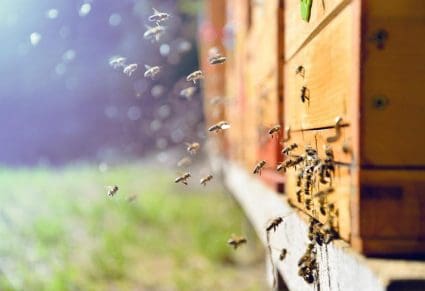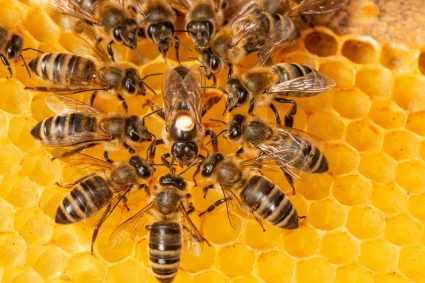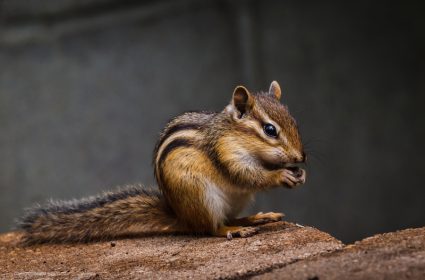
Porcupines are fascinating creatures, but they can pose a significant danger to our curious canine friends. Dogs, with their innate curiosity and instinct to chase, can often find themselves on the wrong end of a porcupine’s quills. In this comprehensive guide, we’ll delve into how to keep dogs away from porcupines, identify porcupine signs, and what to do if your dog has an unfortunate encounter.
To keep dogs away from porcupines, leash your dog especially in areas where porcupines may be present, avoid walking your dog during twilight hours when porcupines are most active, use natural repellents, secure your yard to prevent porcupines from entering, and remove any sources of salt from your property. Additionally, consider training your dog to avoid porcupines through aversion training and recall training.
Understanding Porcupines
Porcupines are most active around dawn, dusk, and nighttime, particularly in the spring and fall. They are herbivores, feeding on fruits, nuts, and twigs, and have a great sense of smell. They are nocturnal but can be active during the day, especially in the summer due to longer days. They also tend to reuse the same den year after year.
Preventing Encounters
Prevention is key to keeping your dog safe from porcupines. Here are some effective ways to prevent encounters:
1. Leash Your Dog: Keeping your dog on a leash, especially in wooded areas or near field edges where porcupines may be present, can help control their movements and prevent them from getting too close to porcupines.
2. Avoid Active Times: Porcupines are more active during twilight hours. Try to avoid walking your dog during these times in areas where porcupines are common.
3. Use Repellents: Natural repellents like PorcupineStopper, which combines the urine of a porcupine’s main predators, can discourage porcupines from entering your property.
4. Secure Your Yard: If you have a fenced yard, ensure it’s secure and high enough to prevent porcupines from entering. You can use hardware cloth or chicken wire to create a barrier around trees or other areas that may attract porcupines.
5. Remove Attractants: Porcupines are attracted to salt and may chew on wooden structures or trees to obtain it. Remove any sources of salt from your property, such as salt licks or salt-treated wood.
Training Your Dog
Training your dog to avoid porcupines can also be beneficial:
1. Aversion Training: Dogs can be trained to avoid porcupines through aversion training. This method’s effectiveness may vary depending on the dog’s drive, but it can be beneficial for more grounded or balanced dogs.
2. Recall Training: Teach your dog an emergency recall behavior. This can be especially beneficial for high-distraction and dangerous moments, such as encountering a porcupine.
Potential Dangers
If a dog does interact with a porcupine, they can suffer from painful quill injuries. These quills can penetrate the skin and muscle, causing pain and potential infection. If a quill breaks off under the skin, it can migrate and cause further internal damage.
What To Do If Your Dog Gets Quilled
If your dog has been quilled by a porcupine, seek immediate veterinary assistance. Do not attempt to remove the quills yourself, as this can cause further injury and complications. The vet will sedate your dog and remove the quills safely and effectively.
Conclusion
By understanding porcupines and taking preventive measures, you can protect your dog from potential encounters. Remember, the best protection is prevention, but if an encounter does occur, seek immediate veterinary care.
Remember to always be vigilant and proactive in protecting your dog from potential dangers in their environment. With these tips, you can help ensure your dog’s safety and well-being when it comes to porcupines.
Frequently Asked Questions
What are the main predators of porcupines?
The main predators of porcupines are large mammals such as coyotes, bobcats, mountain lions, and wolves. Some birds of prey, like owls and eagles, may also prey on young or smaller porcupines.
What is aversion training and how does it work?
Aversion training is a method of conditioning where the dog is trained to associate certain behaviors, like approaching a porcupine, with unpleasant consequences, like a mild shock from a training collar. Over time, the dog learns to avoid the behavior to avoid the unpleasant consequence. It should be noted that this method should be used under the guidance of a professional trainer to ensure it’s done safely and effectively.
What is recall training and how can it help with porcupine encounters?
Recall training is teaching your dog to come back to you immediately upon hearing a specific command. This command should be unique and different from the usual ‘come’ command. If your dog is approaching a porcupine, a strong recall command can interrupt the behavior and bring the dog back to you, preventing a potential encounter.
Can porcupine quills be deadly to dogs?
While not typically deadly, porcupine quills can cause serious injuries and complications if not treated promptly. Quills can migrate and penetrate vital organs, leading to life-threatening conditions. Therefore, immediate veterinary care is essential if a dog is quilled by a porcupine.
Is it okay to let my dog sniff around a porcupine from a distance?
No, it’s not safe to let your dog sniff around a porcupine, even from a distance. Porcupines can launch their quills when they feel threatened, and a curious dog might not be able to react quickly enough to avoid getting quilled.












